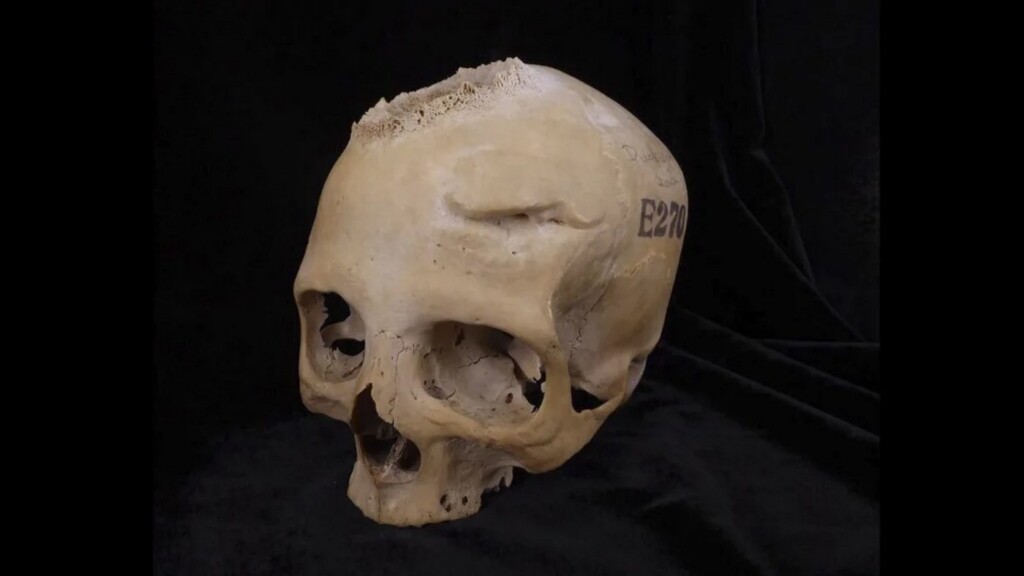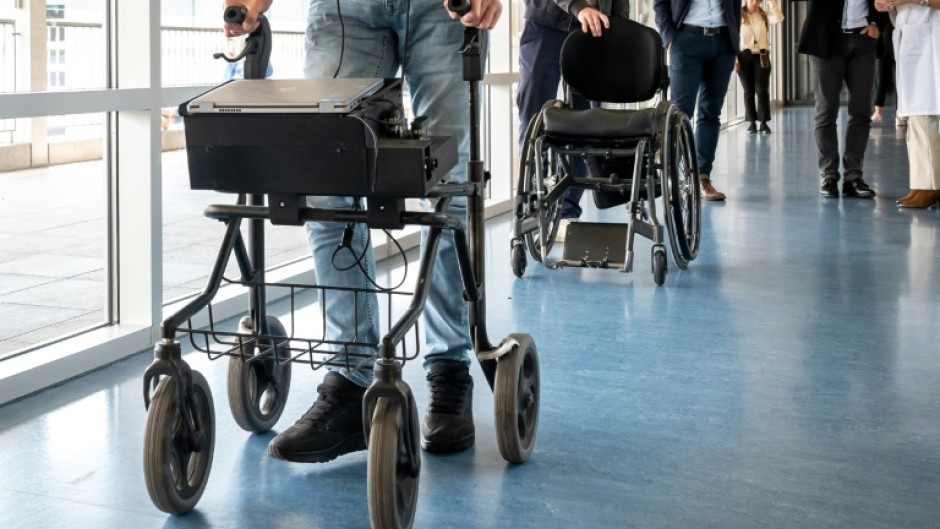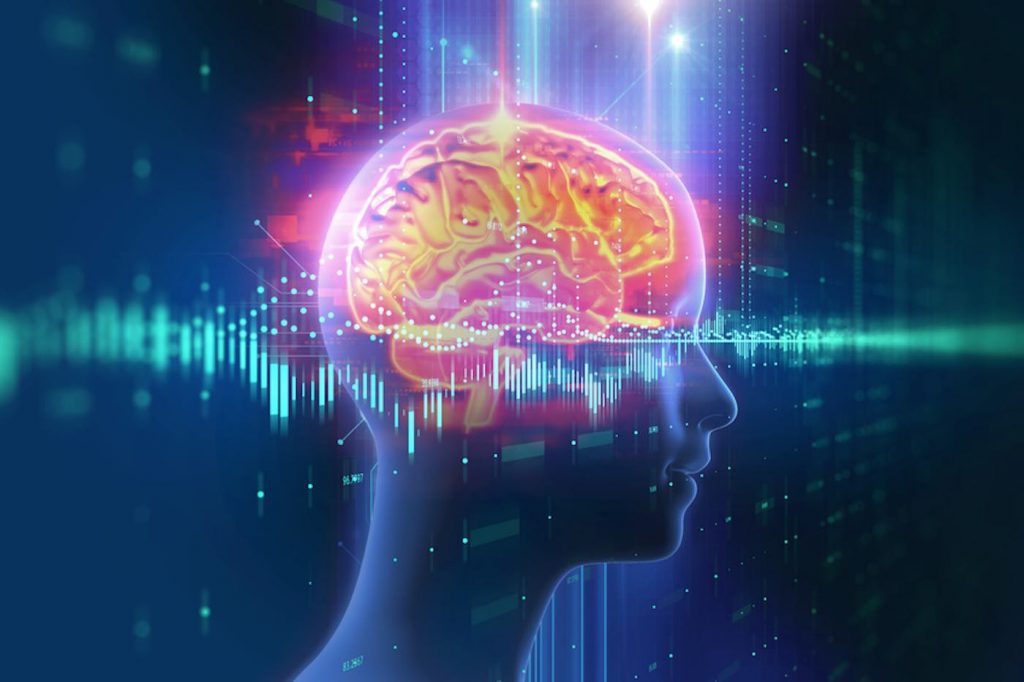
Rapid BP fluctuations may signal risk of brain degeneration in elderly

Poor sleep may make your brain age faster – new study
Abigail Dove, Karolinska Institutet
We spend nearly a third of our lives asleep, yet sleep is anything but wasted time. Far from being passive downtime, it is an active and essential process that helps restore the body and protect the brain. When sleep is disrupted, the brain feels the consequences – sometimes in subtle ways that accumulate over years.
In a new study, my colleagues and I examined sleep behaviour and detailed brain MRI scan data in more than 27,000 UK adults between the ages of 40 and 70. We found that people with poor sleep had brains that appeared significantly older than expected based on their actual age.
What does it mean for the brain to “look older”? While we all grow chronologically older at the same pace, some people’s biological clocks can tick faster or slower than others. New advances in brain imaging and artificial intelligence allow researchers to estimate a person’s brain age based on patterns in brain MRI scans, such as loss of brain tissue, thinning of the cortex and damage to blood vessels.
In our study, brain age was estimated using over 1,000 different imaging markers from MRI scans. We first trained a machine learning model on the scans of the healthiest participants – people with no major diseases, whose brains should closely match their chronological age. Once the model “learned” what normal ageing looks like, we applied it to the full study population.
Having a brain age higher than your actual age can be a signal of departure from healthy ageing. Previous research has linked an older-appearing brain to faster cognitive decline, greater dementia risk and even higher risk of early death.
Sleep is complex, and no single measure can tell the whole story of a person’s sleep health. Our study, therefore, focused on five aspects of sleep self-reported by the study participants: their chronotype (“morning” or “evening” person), how many hours they typically sleep (seven to eight hours is considered optimal), whether they experience insomnia, whether they snore and whether they feel excessively sleepy during the day.
These characteristics can interact in synergistic ways. For example, someone with frequent insomnia may also feel more daytime sleepiness, and having a late chronotype may lead to shorter sleep duration. By integrating all five characteristics into a “healthy sleep score”, we captured a fuller picture of overall sleep health.
People with four or five healthy traits had a “healthy” sleep profile, while those with two to three had an “intermediate” profile, and those with zero or one had a “poor” profile.
When we compared brain age across different sleep profiles, the differences were clear. The gap between brain age and chronological age widened by about six months for every one point decrease in healthy sleep score. On average, people with a poor sleep profile had brains that appeared nearly one year older than expected based on their chronological age, while those with a healthy sleep profile showed no such gap.
We also considered the five sleep characteristics individually: late chronotype and abnormal sleep duration stood out as the biggest contributors to faster brain ageing.
A year may not sound like much, but in terms of brain health, it matters. Even small accelerations in brain ageing can compound over time, potentially increasing the risk of cognitive impairment, dementia and other neurological conditions.
The good news is that sleep habits are modifiable. While not all sleep problems are easily fixed, simple strategies: keeping a regular sleep schedule; limiting caffeine, alcohol and screen use before bedtime; and creating a dark and quiet sleep environment can improve sleep health and may protect brain health.
One explanation may be inflammation. Increasing evidence suggests that sleep disturbances raise the level of inflammation in the body. In turn, inflammation can harm the brain in several ways: damaging blood vessels, triggering the buildup of toxic proteins and speeding up brain cell death.
We were able to investigate the role of inflammation thanks to blood samples collected from participants at the beginning of the study. These samples contain a wealth of information about different inflammatory biomarkers circulating in the body. When we factored this into our analysis, we found that inflammation levels accounted for about 10% of the connection between sleep and brain ageing.
Other processes may also play a role
Another explanation centres on the glymphatic system – the brain’s built-in waste clearance network, which is mainly active during sleep. When sleep is disrupted or insufficient, this system may not function properly, allowing harmful substances to build up in the brain.
Yet another possibility is that poor sleep increases the risk of other health conditions that are themselves damaging for brain health, including type 2 diabetes, obesity and cardiovascular disease.
Our study is one of the largest and most comprehensive of its kind, benefiting from a very large study population, a multidimensional measure of sleep health, and a detailed estimation of brain age through thousands of brain MRI features. Though previous research connected poor sleep to cognitive decline and dementia, our study further demonstrated that poor sleep is tied to a measurably older-looking brain, and inflammation might explain this link.
Brain ageing cannot be avoided, but our behaviour and lifestyle choices can shape how it unfolds. The implications of our research are clear: to keep the brain healthier for longer, it is important to make sleep a priority.![]()
Abigail Dove, Postdoctoral Researcher, Neuroepidemiology, Karolinska Institutet
This article is republished from The Conversation under a Creative Commons license. Read the original article.
Egyptians Performed Brain Surgery 4,000 years ago: A Discovery Called a ‘Milestone in the History of Medicine’
 Evidence of the man’s malignant tumor – supplied by Tondini, Isidro, Camarós
Evidence of the man’s malignant tumor – supplied by Tondini, Isidro, Camarós Skull E270 – supplied by Tondini, Isidro, Camarós
Skull E270 – supplied by Tondini, Isidro, CamarósBrain stimulation can help injured people walk: study

Probiotics May Improve Mood Via Gut–Brain Axis

Scientists use AI to reveal the neural dynamics of human conversation
Newly Identified Neural Stem Cells Could Transform Parkinson's Treatment

Mentally stimulating down time activities linked to better brain health: study

Neuralink’s Blindsight implant to restore vision to people who lost both eyes: Musk

Five scientists honoured for advancing mental health disorder prevention, diagnosis and treatment

New Delhi, (IANS) The Brain & Behavior Research Foundation (BBRF) has announced the recipients of the 2024 Klerman and Freedman Prizes, recognising outstanding clinical and basic research in mental illness. These prestigious awards honour the work of scientists supported by the Foundation's Young Investigator Grants Program.
Scientists discover gut protein that helps protect brain cells from Parkinson’s

Healthy lifestyle, awareness key to combat rising brain stroke, diseases: Experts

Lack of proper sleep could lead to brain-related problems, warn doctors
Study shows how obesity affects brain and leads to low sperm count

Dads show gender biases, in both brain responses and behaviors, toward toddlers
Researchers use VR technology to measure brain activity, stress

Avoiding long exposure to severe temperatures vital to save kids' developing brain: Experts

Light Therapy Can Help People Recover From Major Brain Injuries, Shows Study

What are nootropics and do they really boost your brain?
Humans have long been searching for a “magic elixir” to make us smarter, and improve our focus and memory. This includes traditional Chinese medicine used thousands of years ago to improve cognitive function.
Now we have nootropics, also known as smart drugs, brain boosters or cognitive enhancers.
You can buy these gummies, chewing gums, pills and skin patches online, or from supermarkets, pharmacies or petrol stations. You don’t need a prescription or to consult a health professional.
But do nootropics actually boost your brain? Here’s what the science says.
What are nootropics and how do they work?
Romanian psychologist and chemist Cornelius E. Giurgea coined the term nootropics in the early 1970s to describe compounds that may boost memory and learning. The term comes from the Greek words nӧos (thinking) and tropein (guide).
Nootropics may work in the brain by improving transmission of signals between nerve cells, maintaining the health of nerve cells, and helping in energy production. Some nootropics have antioxidant properties and may reduce damage to nerve cells in the brain caused by the accumulation of free radicals.
But how safe and effective are they? Let’s look at four of the most widely used nootropics.
1. Caffeine
You might be surprised to know caffeine is a nootropic. No wonder so many of us start our day with a coffee. It stimulates our nervous system.
Caffeine is rapidly absorbed into the blood and distributed in nearly all human tissues. This includes the brain where it increases our alertness, reaction time and mood, and we feel as if we have more energy.
For caffeine to have these effects, you need to consume 32-300 milligrams in a single dose. That’s equivalent to around two espressos (for the 300mg dose). So, why the wide range? Genetic variations in a particular gene (the CYP1A2 gene) can affect how fast you metabolise caffeine. So this can explain why some people need more caffeine than others to recognise any neurostimulant effect.
Unfortunately too much caffeine can lead to anxiety-like symptoms and panic attacks, sleep disturbances, hallucinations, gut disturbances and heart problems.
So it’s recommended adults drink no more than 400mg caffeine a day, the equivalent of up to three espressos.
2. L-theanine
L-theanine comes as a supplement, chewing gum or in a beverage. It’s also the most common amino acid in green tea.
Consuming L-theanine as a supplement may increase production of alpha waves in the brain. These are associated with increased alertness and perception of calmness.
However, it’s effect on cognitive functioning is still unclear. Various studies including those comparing a single dose with a daily dose for several weeks, and in different populations, show different outcomes.
But taking L-theanine with caffeine as a supplement improved cognitive performance and alertness in one study. Young adults who consumed L-theanine (97mg) plus caffeine (40mg) could more accurately switch between tasks after a single dose, and said they were more alert.
Another study of people who took L-theanine with caffeine at similar doses to the study above found improvements in several cognitive outcomes, including being less susceptible to distraction.
Although pure L-theanine is well tolerated, there are still relatively few human trials to show it works or is safe over a prolonged period of time. Larger and longer studies examining the optimal dose are also needed.
3. Ashwaghanda
Ashwaghanda is a plant extract commonly used in Indian Ayurvedic medicine for improving memory and cognitive function.
In one study, 225-400mg daily for 30 days improved cognitive performance in healthy males. There were significant improvements in cognitive flexibility (the ability to switch tasks), visual memory (recalling an image), reaction time (response to a stimulus) and executive functioning (recognising rules and categories, and managing rapid decision making).
There are similar effects in older adults with mild cognitive impairment.
But we should be cautious about results from studies using Ashwaghanda supplements; the studies are relatively small and only treated participants for a short time.
4. Creatine
Creatine is an organic compound involved in how the body generates energy and is used as a sports supplement. But it also has cognitive effects.
In a review of available evidence, healthy adults aged 66-76 who took creatine supplements had improved short-term memory.
Long-term supplementation may also have benefits. In another study, people with fatigue after COVID took 4g a day of creatine for six months and reported they were better able to concentrate, and were less fatigued. Creatine may reduce brain inflammation and oxidative stress, to improve cognitive performance and reduce fatigue.
Side effects of creatine supplements in studies are rarely reported. But they include weight gain, gastrointestinal upset and changes in the liver and kidneys.
Where to now?
There is good evidence for brain boosting effects of caffeine and creatine. But the jury is still out on the efficacy, optimal dose and safety of most other nootropics.
So until we have more evidence, consult your health professional before taking a nootropic.
But drinking your daily coffee isn’t likely to do much harm. Thank goodness, because for some of us, it is a magic elixir.![]()
Nenad Naumovski, Professor in Food Science and Human Nutrition, University of Canberra; Amanda Bulman, PhD candidate studying the effects of nutrients on sleep, University of Canberra, and Andrew McKune, Professor, Exercise Science, University of Canberra
This article is republished from The Conversation under a Creative Commons license. Read the original article.





